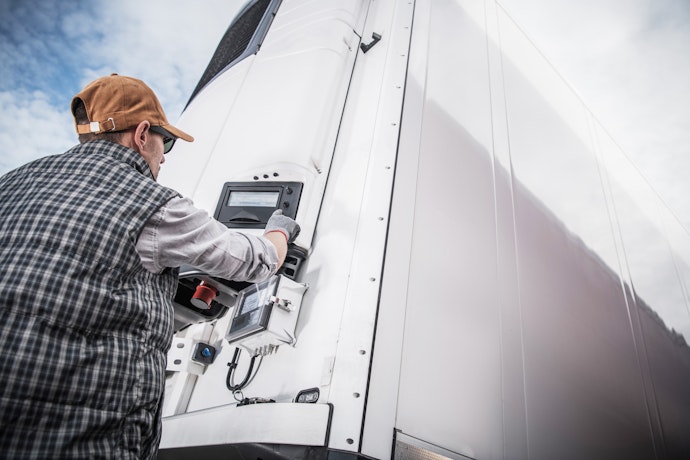2024 Buyers Guide: Fleet Management Software
Learn what's important when evaluating your options for fleet management solutions.
Read more
The cold chain industry is growing rapidly and shows no sign of slowing down. Cold chain systems are crucial to the growth of global trade in perishable products and to the worldwide availability of food and health supplies.
The “cold chain”, or specifically a temperature-controlled supply chain, includes refrigerated production, storage and distribution. And not only does it require specialized equipment such as temperature-controlled trailers to function, cold chain also relies on a series of refrigerated activities to constantly keep products at the correct low-temperature range, making it a complicated industry for shippers and trucking companies alike.
This host of demands is putting the heat on cold chain logistics providers and distributors to promote efficiency, speed delivery and ensure product integrity. Rising consumer expectations for fresher, healthier food means decreased processing, shorter shelf life and increased temperature sensitivity. Additionally, many pharmaceutical and biotechnology products require transport using temperature-controlled systems to keep their therapeutic properties.1 This environment not only requires more transport versatility and vigilance to promote quality and safety—it also substantially increases the cost of a ruined shipment.
At the same time, cold chain operators face the same challenges confronting the supply chain as a whole, including truck driver and capacity shortages, and want to place an increased emphasis on meeting sustainability goals. These challenges can have a particularly big impact on a refrigerated fleet, which requires capital-intensive investment, specially trained drivers and substantial energy consumption, and involves increased liability and heightened inspection risk.
Integrated telematics and asset tracking technology for trailers can help cold chain logistics providers and distributors tackle these challenges head-on. By providing near-real time visibility for trailers and other assets, near-real time monitoring of temperature and other key metrics, and on-demand communication with truck drivers, asset tracking solutions boost cold chain efficiency, delivery speed and product safety for the long haul.
By quickly and easily installing small, mountable GPS tracking devices, it’s possible to seamlessly monitor and track trailers and other assets critical to cold chain operations via a laptop, tablet or smartphone. Here are five ways these solutions deliver temperature-sensitive products where they need to go, safely and efficiently:
Whether you have dozens, hundreds or thousands of powered or non-powered assets of various makes, models and manufacturers, you can track them on a single web-based dashboard that consolidates data, clusters multiple assets and offers fast searching or tag filtering.
That means you can easily locate the closest available trailer for the right job. Equally critical for cold chain, you can track trailers through the crucial last mile of delivery route, and verify that there’s space on the receiving dock to stage and load products in an appropriate temperature-controlled environment.
In addition, remote temperature monitoring and control allows you to improve fuel utilization. It also reduces the likelihood that drivers will turn off the reefer to save fuel, thus decreasing spoilage and losses.
Make sure to select an intuitive, comprehensive solution that matches your cold chain delivery needs and helps you deliver the speed and efficiency your customers demand. Features to look for include:
Telematics solutions are an essential tool for fleets operating in the cold chain. By automating inspections, improving maintenance, enhancing safety, and managing compliance, telematics solutions can enable fleets to operate at peak efficiency while reducing risk and maintaining a high level of safety and quality.
Schedule a demo to learn more about the ways logistics management solutions can streamline compliance management for your fleet.




Find out how our platform gives you the visibility you need to get more done.
Learn what's important when evaluating your options for fleet management solutions.
Read moreWith telematics, you can track operational costs, routing, and driver and vehicle performance. Learn how you can use these...
Read moreVerizon Connect solutions help reduce paperwork burden, encourage safer driving habits and simplify your driver’s compliance...
Read more